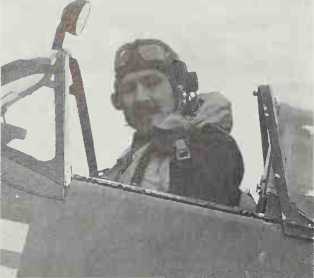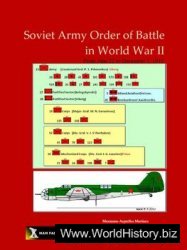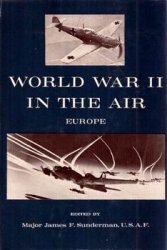
Fighter commander Sir Roderick Hill
Hill, Air Chief Marshal Sir Roderick (1894-1954). Br. Air Marshal Commanding, Air Defence of Great Britain, 1943-44, Aoc-in-c, Fighter Command 194445. Hill was intellectually gifted and well able to understand the advice of scientists. This was especially relevant because the main threat to Britain while he commanded her air defences came from entirely new developments, namely, the German V-1 and V-2 weapons. There was no means of active defence against the latter, but Hill’s skilful deployment of his fighters produced very effective results against the former. He recognized the great importance of antiaircraft guns in any scheme of defence against the V-ls and, earlier than Anti-Aircraft Command itself, he foresaw the need for the forward deployment of the guns as opposed to their concentration around the expected targets. When this was done, the V-1 campaign was virtually defeated. ANF.
Hillenkoeter, Rear Adm Roscoe Henry (1897-1982). US. Naval intelligence staff. Pacific, 194243; first director of cia, 1947-50.
Himmelbett. German night fighter control station consisting of a Freya and two Wiirzburgs, one to plot the fighter and the other the bomber. In 1942 Kammhuber organized them in zones to cover the approaches to Germany.
Himmler, Reichsfuhrer Heinrich (1900—1945). Ger. An early member of the Nazi Party, Himmler was given command of the SS in 1929 and built it into a cornerstone of the Third Reich. He organized the persecution and repression of Hitler’s enemies both inside and outside the party and was directly responsible for the implementation of the “Final Solution” and the concentration camp system. Although late in World War II his duties included the Ministry of the Interior and command of Army Group Vistula, he was ill-equipped to carry out his tasks. Arrested by British forces, he committed suicide on May 23 1945. MS.
Hindenburg, Field Marshal (later President) Paul von (1847
1934). Ger. Hindenburg was decorated for bravery at Kbniggratz in 1866 and in the war against France in 1870-71. He retired in 1911 after commanding the IV Army Corps, but was recalled in August 1914 to replace von Pritt-witz following the Battle of Gum-binnen and took over the German Eighth Army in East Prussia on August 22, with Ludendorff as his cos. While the victories at Tan-nenberg in August and the Masurian Lakes in September 1914 undoubtedly owed more to the planning of Ludendorff and Hoffmann, or even to Russian blunders, than to any contribution of Hindenburg, he carried the ultimate responsibility and then and subsequently acted as a steadying influence upon Ludendorff, who was prone to fits of doubt and apprehension. A national idol as a result of Tannen-berg, Hindenburg was appointed c-in-c of the German armies on the Eastern Front on November 1 1914, with Ludendorff and Hoffmann still at his side. Hindenburg shared Ludendorffs illusion that the Eastern Front was the decisive theatre, a belief which caused repeated disputes with Falkenhayn. When Falkenhayn fell from grace, Hindenburg succeeded him as CGS on August 29 1916, Ludendorff becoming his “First Quartermaster-General”. Hindenburg’s legendary reputation, added to the swift defeat of Romania and the ending of the costly struggle at Verdun, served initially to reassure the German people but, for the remainder of the war, he allowed Ludendorff to dominate' him almost completely and lent his authority to many of the latter’s more extreme war aims. Even as a figurehead, therefore, Hindenburg played his part in the strategic and political mistakes which determined the extent of Germany’s defeat in 1918. Elected President of the Weimar Republic in 1925, he was re-elected in 1932, although his increasing senility enabled von Papen and others, including his own son Oskar, to persuade him to appoint Hitler as Chancellor in January 1933. PJS.
Hindenburg Line. To economize on manpower and to replace the costly linear defence tactics of previous years, the Germans, from September 1916 onwards, not only began to evolve a new doctrine of flexible and mobile defence-in-depth but also initiated the construction of fresh positions behind the existing Western Front. The most important section of this new fortified belt ran from Arras, through St Quentin, to a point east of Soissons and, although called the Siegfried Stellung by the Germans, was known to the British as the Hindenburg Line. By withdrawing to the Hindenburg Line between February and April 1917 — implementing a “scorched earth” policy as they did so - the Germans abandoned the huge Noyon salient and shortened their front by 25 miles (40km), freeing up to 14 divisions. The Siegfried Stellung was not merely a “line” but rather a series of defensive zones. The “outpost zone”, some 600yd (550m) deep, was manned by small squads in shallow concrete dugouts. Behind this was the main “battle zone”, up to 2,500yd (2,300m) deep and containing the first and second trench lines as well as a network of skilfully-sited concrete machine gun emplacements. The trenches were protected by thick belts of wire, laid out in a zig-zag pattern to enable machine guns to sweep the angles. A “rear zone” and then a fourth zone were subsequently added, bringing the Hindenburg Line to a depth of 6,000-8,000yd (5,500—7,300m). Despite their formidable nature, the main Hindenburg defences were decisively breached in the British offensive operations of September-October
1918. PJS.
Hipper, Adm Franz Ritter von
(1863-1932). Ger. Commander of the German Scouting Force at Jutland. c-in-c, the High Seas Fleet August-November 1918. Hipper, who was often the direct opponent of Beatty, several times had the
Better of the exchange. He led the naval attacks on the British east coast in 1914, in which he proved to be too elusive for the defenders, but in the action at Dogger Bank in January 1915, he suffered a reverse when Beatty caught him with a superior force. He lost the cruiser Blucher and very nearly his flagship, Seydlitz. At Jutland, in the initial battlecruiser confrontation, the outcome was much more in Hipper’s favour. Although in a five to six inferiority, he sank two of Beatty’s battlecruisers. Indefatigable and Queen Mary, without loss to himself. As the battle developed and the battlecruiser scouting forces became absorbed into the main action, Hipper’s flagship, Liitzow, was sunk and he had to transfer for a time to a destroyer. Although Hipper, like Beatty, was doubtful of the wisdom of some of his c-in-c’s orders, there has probably been less controversy about the brilliance of his leadership than has been the case, perhaps, with any other admiral at Jutland.
After Jutland, the High Seas Fleet never again effectively came out. The morale of its men declined and when Hipper became c-in-c, it was nearly a spent force. In October 1918 mutinies broke out but Hipper had no real responsibility for the collapse. ANF.
Hirohito: obscure wartime role
Hirohito, Emperor of Japan
(1901-1989). The 124th god-emperor in a line descended from the sun goddess Amaterasu, Hirohito acceded in 1926. Himself scholarly and withdrawn, he presided over a period of extreme militarism in which his personal role was, and will likely remain, obscure. He may have approved (if only by not opposing) the aggressive policies culminating in World War II, and certainly evoked the suicidal devotion of Japanese servicemen. In 1945 - at some personal risk, and realizing that the Imperial status would be forever changed - he supported the peace faction, personally announcing Japan’s surrender over the radio on August 16. Although China, Australia and New Zealand pressed for his trial as a war criminal, MacArthur recognized Hirohito’s value as a focus of political stability in the reconstruction of Japan. Renouncing his divinity, he became a constitutional monarch. RO’N.
Hiroshima, atomic attack on.
Hiroshima, a major military base and naval port, Japan’s seventh largest city, was chosen as the primary target of the first atomic bomb. At 0245 hours on August 6 1945, the B-29 Superfortress “Eno-la Gay” took off from North Field, Tinian, Mariana Islands, on “General Bombing Mission 13”. The aircraft, from usaaf’s 509th Composite Group, was seven tons overweight and, with a crew of nine, four scientists and its “Little Boy” atomic bomb struggled to clear the runway. It was accompanied by two observer B-29s. As a safety precaution the bomb was armed in flight and, with favourable weather conditions over the target, the pilot, Col Paul Tibbets, began his bombing run at 0811. The bomb was released by bomb-aimer Maj Thomas Ferebee shortly after 0815 hours from a height of six miles. “Enola Gay” made a sharp turn and less than one minute later the bomb exploded at a height of 1,850 feet. The city’s air-raid warning system had not reacted to “Enola Gay” and the inhabitants were therefore denied even the scant protection of conventional shelters. The fireball generated a ground temperature of
6,000 degrees C.; thermal radiation vaporized thousands of people and buildings and burnt and scorched everything within a radius of two miles. A shock wave of tremendous force increased the destruction, flattening nearly everything in its path. People still on the streets were prey to flying debris caught in the fierce winds generated by the explosion, while these same winds fanned raging fires. Apart from the dead and wounded, thousands more soon succumbed to the effects of radiation. Figures for casulaties vary enormously, both because of the total chaos occasioned by the bomb and because of the ultimately incalculable after-effects of radiation. However, figures of approximately 70,000 killed and 70,000 wounded are generally accepted, with the numbers eventually dying of radiation poisoning amounting to some 200,000. MS.
Hiryu. Japanese aircraft carrier. Slightly modified version of Soryu with greater tonnage (21,900 tons full load) and (unusually) the “island” superstructure on the port side of the flight deck. Completed
1939. With her sister in the Pearl Harbor attack and subsequent raids on Darwin, Ceylon etc. Sank after dive-bombing, Midway
(1941).
Hitler, Adolf (1889-1945). Ger. Born in Braunau am Inn in Austria, Hitler’s character and many of his political and social attitudes were formed during a frustrating period spent as an unsuccessful artist in Vienna. On the outbreak of World War I, he joined the German Army, becoming a dispatch runner in the 16th Bavarian Infantry Regiment. Serving on the Western Front, Hitler was wounded and gassed and, although he failed to rise above the rank of lance-corporal, he was awarded the Iron Cross. After the war he acted as a political agent for the army in Munich, investigating the activities of the German Workers’ Party. But observation changed to participation and, by July 1921, Hitler had become its chairman, changing its name to the National Socialist German Workers’ Party (nsdap). Steadily the characteristics of the Nazi Party began to develop; the swastika, stormtroop-ers, vehement anti-semitism and violent recriminations against the
Chancellor Adolf Hitler with President von Hindenburg, 1933
Dy effort, he emerged from Land-esberg prison with a more considered political approach. Although he maintained his use of strong-arm tactics, he simultaneously courted powerful conservative elements in society who sought to use him as a tool against the communist threat. The Nazis’ votes increased throughout the early 1930s and on January 30 1933 Hitler was appointed Chancellor (although his triumph came at a time when the Nazis’ performance at the polls began to slip). Having secured power by “legal” means, he exploited his position to eliminate all opposition to his regime, including, on the “Night of the Long Knives”, those within his own party. Domestically, he took action to alleviate the effects of the depression while focusing popular discontent upon the communists and Jews. He also won support from large sections of the armed forces by adopting a policy of rearmament. Hitler’s foreign policy mesmerized his countrymen and foreign diplomats alike with a series of spectacular coups, notably the annexation of the Saar, Rhineland, Austria, Sudetenland and Memel. Finally, with the invasion of Poland in September 1939, he achieved a stunning victory but involved Germany in a world war for which its armed forces were ill-prepared. In the opening campaigns, Hitler’s intuitive grasp of blitzkrieg tactics surprised his adversaries and many of his own generals. But success brought
Over-confidence and resulted in his taking command of Germany’s armies in December 1941. He proved unequal to the task, especially as sycophants protected him from adverse reports, compounding his own failure to appreciate the realities of strategic and tactical problems. He interfered in his generals’ conduct of operations and developed a questionable faith in the salvation offered by forlorn offensives and secret weapons. He committed suicide in Berlin on April 30 1945. MS.
Hitler Line. Constructed across the Liri Valley north of Cassino as a reserve position behind the Gustav Line. It was breached by I Canadian Corps (Burns) on May 23 1944 during Alexander’s “Diadem” offensive to take Rome.
Hitler Youth. Compulsory Nazi organization for boys {Hitler Jugend) and girls {Bund Deutscher Mddel).
Hiyo. Japanese aircraft carrier. Junyo class; converted while building from liner; completed 1942. In action at Guadalcanal, and at Philippine Sea where she was sunk by aircraft torpedoes (1944).
Hoa Binh, Battle of (1951-52). French forces occupied the town of Hoa Binh, 47 miles (75km) west of Hanoi, in November 1951 for the purpose of blocking a vital communist supply line and influencing debate in Paris. Though direct attacks by the People's Army (pavn) failed to dislodge the French, attacks on access routes and the spreading of insecurity in the Red River delta forced the French to abandon Hoa Binh on February 24 1952. The battle revealed the greatly improved ability of communist forces to operate on a sustained basis and declining French offensive capability.
Hoa Hao. A religious sect, a variant of Theravada Buddhism; founded in 1939 in the Mekong delta of southern Vietnam. By the late 1940s the sect had one million followers (1.5 milion in 1970) and rivalled the communists for influence on the peasantry. Like the Cao Dai, the Hoa Hao had their own armed forces and considerable autonomy in areas where they were concentrated. The sect cooperated with the communists against the French but switched allegiance in 1947.
In 1955, Ngo Dinh Diem dispersed the Hoa Hao army along with the Cao Dai and Binh Xuyen, but the sect remained influential. Though declining zeal and sectarian disunity let the communists make inroads into Hoa Hao areas, sect villages generally resisted communist control; armed Hoa Hao bands continued to fight after Saigon’s fall in 1975. WST.
Hoang Xuan Lam, Lt Gen
(b. l928). Republic of Vietnam. Commander of the Army of the Republic of Vietnam (arvn) I Corps; responsible for the recapture of Hue in the 1968 Tet offensive and for organizing the South Vietnamese force that was sent into Laos during Operation “Lam Son 719” in 1971. President Thieu replaced Lam with the more dynamic Ngo Quang Truong following the North Vietnamese attack on Quang Tri in spring 1972.
Hobart. Australian guided missile destroyer that relieved a US destroyer off the coast of central Vietnam near Chu Lai on March 31
1967. Thus Australia became the first American ally to make a tri-service (land, sea, air) contribution to the war. Under Australian command but US Navy operational control, Hobart engaged in shore bombardment, picket duties for carriers and coastal patrolling.




 World History
World History









